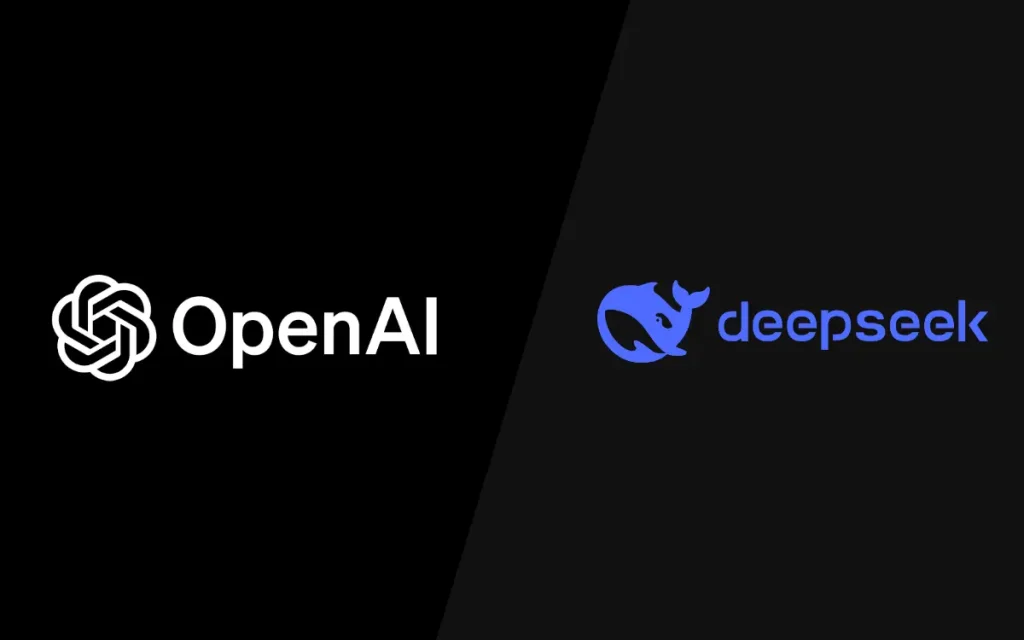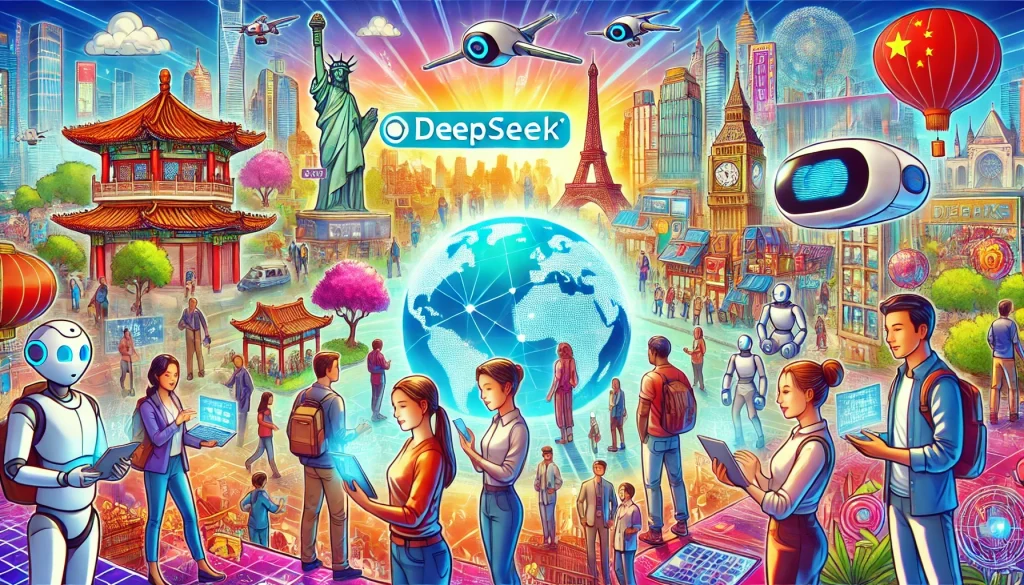Contents
Introduction:
Artificial intelligence (AI) is transforming the global economy, technological advancements, and even the way human society operates at an unprecedented pace. From natural language processing to autonomous driving, from medical diagnostics to intelligent manufacturing, AI is permeating every industry. However, the widespread adoption of AI still faces significant challenges such as high costs, data monopolization, and technological barriers. This article explores its technological innovations, global influence, competition with OpenAI, and DeepSeek Leading the Open-Source AI Revolution.
DeepSeek’s Revolutionary Algorithm: A Breakthrough in AI Technology
(1) High-Efficiency Neural Network Architecture
DeepSeek optimizes the Transformer model to reduce computational redundancy and improve inference speed. Compared to mainstream AI models, DeepSeek provides superior computational efficiency on the same hardware conditions. For example, compared to OpenAI’s GPT series, DeepSeek offers faster inference responses while reducing energy consumption.
(2) Lower Computational Costs and Scalability
Traditional AI models require expensive GPU resources for training and inference. DeepSeek has optimized parameter compression and distributed computing, making it feasible for small businesses and individual developers to afford AI computing costs.
(3) Multilingual Adaptability and NLP Breakthroughs
DeepSeek excels not only in Chinese but also in multiple languages, including English, French, and Spanish. Its multilingual capabilities make AI more accessible to a global audience.
(4) Real-World Applications
DeepSeek has been widely used in fields such as automated customer service, intelligent writing assistants, code completion, and medical image analysis. For instance, in the customer service industry, DeepSeek’s AI-powered chatbots significantly reduce operational costs while enhancing user experience.
DeepSeek’s Global Influence: The Power of Open-Source
As a pioneer in open-source AI, DeepSeek is playing a crucial role in making AI accessible worldwide.
(1) Lowering Technological Barriers for Developing Countries
Many developing countries struggle to deploy AI due to the high cost of computing resources. DeepSeek’s open-source approach allows these regions to access cutting-edge AI at minimal expense. For example, in Africa, DeepSeek is used for agricultural pest monitoring to increase crop yields. In Southeast Asia, its AI-powered education platforms enhance learning experiences for students.
(2) Building a Global Open-Source Community
DeepSeek’s open-source philosophy has attracted developers worldwide, who contribute code, optimize models, and share datasets. This collaborative ecosystem accelerates AI innovation and broadens its application scope.
(3) Data Security and Privacy Protection
Many enterprises and governments are concerned about data privacy in AI training. DeepSeek addresses this by enabling decentralized computing and on-premise deployment, ensuring that users retain control over their data while leveraging AI’s capabilities.
DeepSeek vs. OpenAI
DeepSeek and OpenAI represent two distinct business models in AI development—open-source and closed-source.
| Comparison | DeepSeek (Open-Source) | OpenAI (Closed-Source) |
|---|---|---|
| Code Access | Fully open-source, freely available to developers worldwide | Proprietary, restricted to select enterprises |
| Usage Cost | Free or low-cost | Expensive subscription fees (e.g., GPT-4 API) |
| Innovation Speed | Rapid iteration driven by global open-source contributions | Internal R&D, slower update cycles |
| Application Flexibility | Suitable for diverse industries, highly customizable | Limited by OpenAI’s commercial strategies |
| Data Security | On-premise deployment available, ensuring privacy | Requires data to be uploaded to OpenAI’s servers, raising privacy concerns |
Due to OpenAI’s high costs, many small businesses and independent developers are unable to afford its services. DeepSeek, by contrast, lowers the entry barriers through open-source access, enabling more innovators to leverage AI for product development and research.
Furthermore, OpenAI’s closed ecosystem creates a risk of AI monopolization by a few tech giants. In contrast, DeepSeek’s open-source strategy fosters global collaboration, ensuring AI development remains decentralized and inclusive.
Open-Source AI vs. Closed-Source AI
OpenAI released the lightweight AI model o3-mini on February 1, 2025, and for the first time, made an inference model available to free users. However, OpenAI’s services remain restricted in mainland China, requiring users to access them through specific network environments.
Regarding the discussion of open-source AI vs. closed-source AI, OpenAI CEO Sam Altman recently stated in a Reddit AMA: “I personally think we are on the wrong side of history on this one and need to figure out a different strategy for open source.” This suggests that he recognizes the global sensation caused by DeepSeek’s open-source approach. In contrast, under his leadership, OpenAI has opted for a closed-source strategy, which may prove to be a misstep.
In summary, open source plays a crucial role in the AI field. It accelerates technological iteration and innovation, encourages collective intelligence, and prevents a single company from monopolizing the industry. However, open-source AI also comes with potential security and ethical challenges, requiring a delicate balance between openness and safety.
Future Outlook: DeepSeek Leading the Open-Source AI Revolution
(1) Lowering AI Adoption Barriers
It provides user-friendly interfaces, well-documented APIs, and automated learning tools, making AI accessible even to non-technical users. For example, a small e-commerce business can leverage DeepSeek’s AI capabilities to optimize product descriptions and improve conversion rates without hiring an AI engineer.
(2) AI Self-Learning and Personalization
DeepSeek’s models continuously adapt to user behavior, optimizing themselves for better performance. In education, for example, DeepSeek AI can personalize learning content based on students’ progress, enhancing their learning outcomes.
(3) AI’s Role in Societal Advancement
DeepSeek’s AI will play a crucial role in fields such as healthcare, agriculture, and education. In medical diagnostics, it can analyze imaging data to assist doctors in early disease detection. In agriculture, it can integrate with drone technology to enable automated crop monitoring and improve farming efficiency.
Conclusion:
DeepSeek has emerged as a leading open-source AI project that is driving AI democratization through innovative algorithms, an open-source philosophy, and a strong developer community. Unlike closed-source giants like OpenAI, it is breaking down competitive barriers, enabling more countries, businesses, developers, and individuals to access and utilize cutting-edge AI technology at a lower cost.




